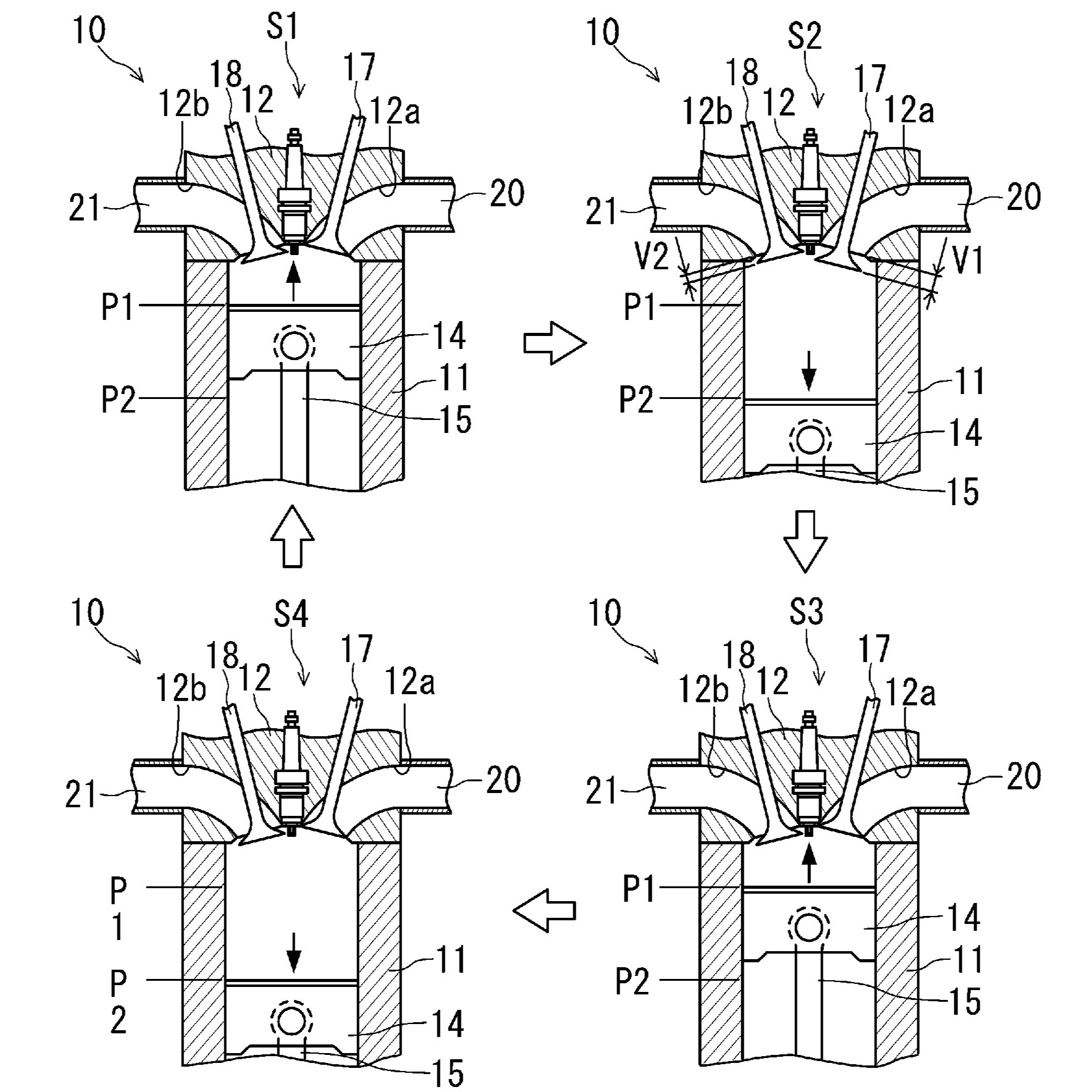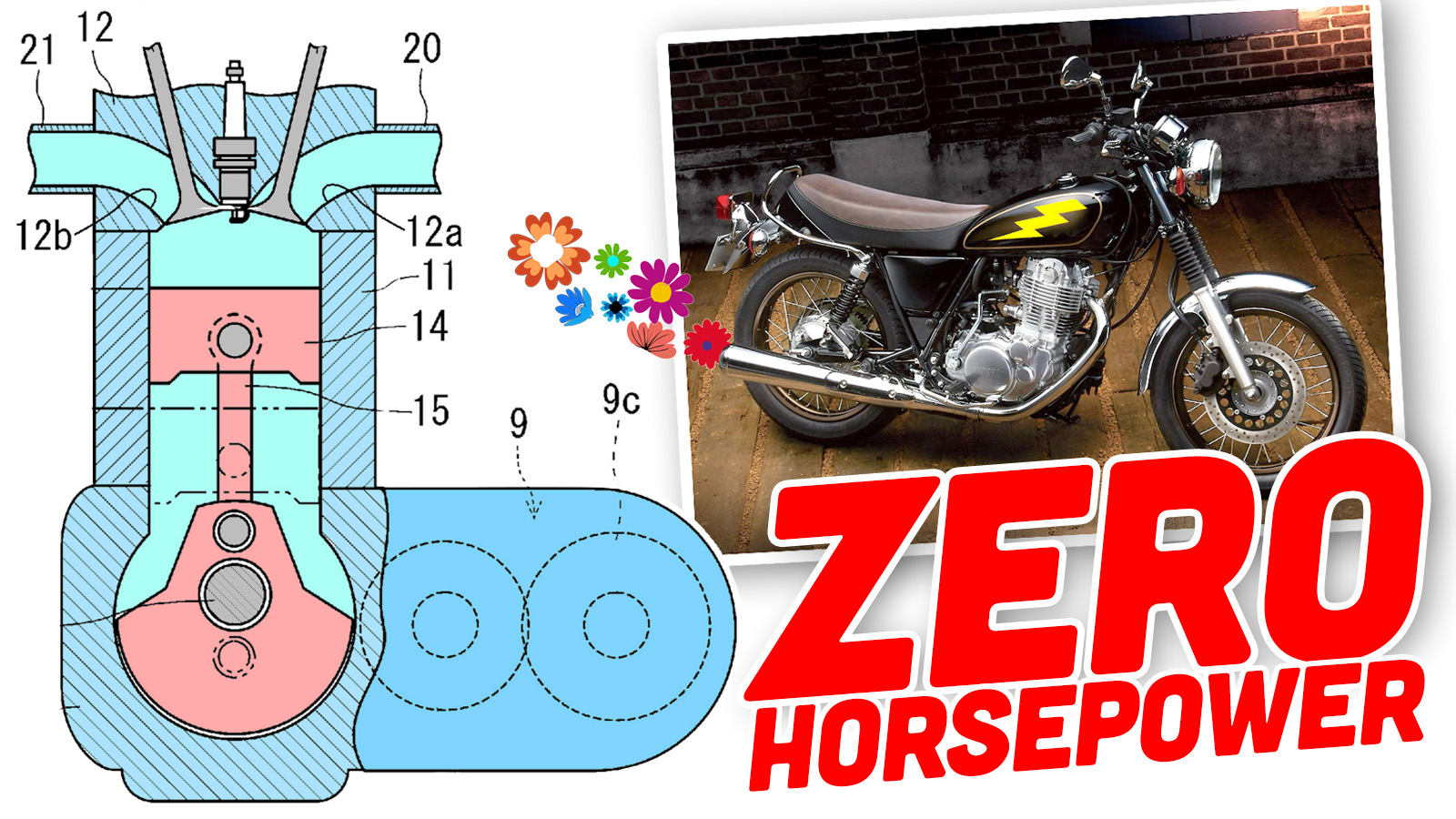One of the unique parts about riding an electric motorcycle is the lack of theatrics, as there is very little in the way of noise and vibration. But not every motorcyclist is down with silently zipping around. For those people, Yamaha has cooked up a wild solution. The motorcycle builder and musical instrument crafter has come up with a functional, but fake “engine” to place inside electric motorcycles that vibrates and makes noise, just like your gas-powered hog does.
There is a somewhat recent trend out there of manufacturers trying to make their electric vehicles feel closer to ones powered by internal combustion, but without the downsides of having an actual ICE powertrain. Nowadays, you can buy an electric Dodge Charger with a fake exhaust that’s so loud it breaks exhaust sound ordinances. Meanwhile, the Hyundai Ioniq 5 N simulates the shifting of a real transmission and adds fake engine noises on top of that. Many EVs and some hybrids pipe in some sort of alien “engine note” through their interior speakers.
The electric motorcycle industry has largely avoided these features, and I think it’s for the better. There is something tranquil about riding an electric motorcycle through a scenic area, and you’re entirely unburdened by sound or vibration. You can just enjoy the world around you, taking in the sights and smells without any sort of distraction. One of the greatest parts of my one-and-a-half-year test of a Zero DSR/X was simply the fact that I got nearly three thousand miles of peace and quiet. If I rode the DSR/X through a forest, there wasn’t the sound of a roaring engine, but only the sound of my tires cracking sticks and crackling through fallen leaves. I have never been more immersed in nature while operating a vehicle.

Even when Harley-Davidson launched the original LiveWire, it didn’t give the bike fake engine noises, but used straight-cut gears to create a distinctive sound. Fake engine sounds are so weird in the electric motorcycle world that Royal Enfield’s April Fools 2025 joke was a press release suggesting its new Flying Flea will have a noise and vibration generator.
The only electric motorcycle that I can think of that fakes vibrations and noise is the Emula One from Italian startup 2electron S.r.l. (pictured above), which also has a simulated transmission and clutch. So, the fact that Yamaha is apparently looking into this technology is pretty big.
A Fake Functional Engine

This story comes to us from our friends at RideApart, but I also dug into the patent for myself to see what Yamaha was thinking about here. It’s somehow wilder than you’d think. The patent, publication number WO/2025/191637, opens with a banger:
A four-stroke reciprocating engine generates power by burning a mixture of air and fossil fuel such as gasoline in its cylinders, producing intake noise, exhaust noise, vibrations, etc. during each of the intake, compression, explosion, and exhaust strokes. Drivers of saddle-type vehicles powered by a reciprocating engine feel a sense of excitement when they experience the sounds and vibrations that occur in response to their accelerator operation.
On the other hand, saddle-type electric vehicles, which use a motor as a power source, do not burn gasoline or the like, and therefore do not produce the intake noise, exhaust noise, vibration, etc. that conventional reciprocating engines produce. Therefore, while some saddle-type vehicle enthusiasts support the reduction of carbon dioxide emissions, they have desired to drive a saddle-type vehicle that allows them to experience the unique sounds and vibrations of a reciprocating engine.
Therefore, a vehicle drive motor that has an appearance similar to that of a conventional reciprocating engine has been disclosed. The vehicle drive motor described in Patent Document 1 rotates a crankshaft by reciprocating a piston (linear motor slider) in a cylinder using a linear motor. The vehicle drive motor is configured to take in air through an intake valve and exhaust air through an exhaust valve as the piston reciprocates.

It should be noted that this patent was originally filed in Japanese; that’s why the English is a bit awkward. However, your eyes do not deceive you. Yamaha’s engineers really crafted a functional “engine” that doesn’t really serve a real purpose. If you continue to read the patent, Yamaha says the fake engine has a crankshaft, a cylinder, a piston, and valves. The quasi-engine, while not burning any fuel, even has a compression and exhaust stroke. Apparently, the entire purpose of this engine is to make noise and vibrate.
Yamaha then notes that the engine is powered by the electric motor of the motorcycle, which means that there is some power loss during the fake engine’s compression stroke. Yes, adding a “functional” engine to an electric motorcycle actually makes it slower. So, Yamaha says that its engineers went through quite a process to reduce said power loss. The image below shows the coupler between the electric motor and the crankshaft:

If you squint really hard, you might see some Yamaha SR400 in the motorcycle in the patent design:

The patent explains that the fake engine has the typical ICE four strokes, and then points out which strokes the noise will be coming from:
The saddle-type electric vehicle of the present application is not equipped with a reciprocating engine, but is configured as an electric vehicle in which the power of the motor is transmitted to the drive wheels by rotating a crankshaft about an axis line by the motor. In the saddle-type electric vehicle, the power of the motor is transmitted to the drive wheels via the crankshaft, and the piston in the cylinder is reciprocated by the crankshaft.
The saddle-type electric vehicle draws outside air into the cylinder through at least an intake port during a second stroke, which corresponds to the intake stroke of a reciprocating engine. That is, the saddle-type electric vehicle generates an intake noise at least once during the second stroke during four cycles from the first stroke to the fourth stroke. The straddle-type electric vehicle exhausts air from the cylinder to the outside through at least the exhaust port during a first stroke corresponding to the exhaust stroke of a reciprocating engine and a third stroke corresponding to the compression stroke of the reciprocating engine, generating an exhaust sound.

Yamaha clarifies that the fake engine has nearly all of the components of a four-stroke internal combustion engine, but it doesn’t generate any power.
In a typical four-stroke engine, gases are exhausted in the fourth stroke after the combustion stroke. In this engine, Yamaha says, the air exhausts out of the exhaust port during “at least” the first and third strokes. However, as the patent notes above, apparently, the engine can also just leave the exhaust port open during all strokes. These measures reduce the power loss to the electric motor. Yamaha says that the motions of the fake engine create the vibrations.
One more interesting note from the patent is that Yamaha says that the fake engine can be connected or disconnected from the motor using a clutch and a start switch. So, in this bizarre future motorcycle patent, it’s possible to disable the fake engine.
But Why?

What’s blowing my mind here is that there is precedent for giving an EV fake engine sounds and vibrations. Pretty much everyone else has used a combination of speakers and subwoofers to give the sound and feel of an ICE in an EV. Yamaha decided to take the most insane way to achieve the same result by making a real engine that does a whole lot of nothing. The patent images even show what appears to be air cooling fins, which is just too hilarious.
Now, I will say that Yamaha has not announced any sort of production motorcycle based on this design. As it is, Yamaha has been teasing all sorts of weird electric motorcycles, including the Motoroid 2 pictured above, but never puts any of them into production. Also, it is pretty common for patents to go absolutely nowhere.
[Ed Note: If you’ve ever cranked a gasoline engine for an extended period, you know that the pumping sound/vibration of a piston engine is unique, but without combustion, you have to wonder if this will sound close enough to fool anyone into thinking this is an actual gas engine. I asked NVH expert Steve Balistreri his thoughts, and he told me:
“It would sound pretty similar to it running normally as the pumping action makes most of the noise. The temp difference and lack of combustion noise would change things a bit but the dominant frequencies would be the same. ”
[…]
It’s a neat idea but strange when speakers exist that can play basically whatever you want. Like you’d need to change the oil and stuff on your noisemaker that has hundreds of more parts than a set of speakers. You are also locked into the type of engine sound.
Also, if you want to learn the science of exhaust sounds, we have the best explainer on the internet. Also, this patent is insane.
ED NOTE 2: It turns out, quite a few engine manufacturers do a “cold test” where they spin up an engine using a dyno; there’s no fuel or combustion, and it’s done just to confirm the engine works and that no parts are missing. Here’s the sound of a “cold test.” It’s quite similar to an actual running engine, but of course, without gears in an electric bike, the sound of a gear change will be missing:
-DT]
Granted, this whole thing feels like a solution in search of a problem. I know that there are a lot of folks who live by the mantra of “loud pipes save lives,” but is putting a functional, yet somehow fake engine on an electric motorcycle going to convince them to buy electric? I’m not sure, but I sure hope Yamaha’s engineers had a lot of fun with this, because it’s properly silly.
Support our mission of championing car culture by becoming an Official Autopian Member.









Speaker + scaled up phone vibrator = this
They might also provide a fuel tank and an ignition system to complete the “feel”. However, if an owner decides to run gasoline through the tank and let it combust in the cylinder that does not suggest that Yamaha endorses this behavior.
If this were a Triumph patent, there would be a provision for leaking oil.
Smh. Just smh. Ever heard of a spintron? When that dodge plays engine noise, does the driver FEEL anything?? Have you ever seen a bike that didn’t come from the factory with a stereo?? Are they supposed to put one on just to play noise no one could hear after 3 mph??? And STILL have no feel? Do the terms NVH, audiology, & psychology mean anything to you?? A person who buys a motorcycle but wants to minimize emissions is not looking for just an overgrown electric scooter with some speakers that play engine sounds. That bs sounds fake in a car and would be worse on a bike. Why? Because that’s not how sound from a ICE really works. Soundwaves from speakers don’t propagate through the air like the sounds from an actual machine does, and it would be A)cost prohibitive, B)take a ton of power to drive enough speakers to make it even close, and C) weigh a ton. It’s like do people even still teach science in schools??? Dang.
I’m not entirely sure who you’re ranting at, but I think I agree with you. I enjoyed the deeply silent experience of riding a Zero, and don’t see the need or even the market for an electric motorcycle with fake engine noises and vibrations. My Triumph Rocket has real engine noises and feeling in spades! 🙂
I have seen guys rolling around with aftermarket stereos on their motorcycles, and some of them are loud enough that I can hear Kid Rock from my apartment. Ha.
I think this is a patent to establish prior art on as many claims as possible. I have my name on some pretty weird patent applications that basically boiled down to: something happens and you use some rules to figure out who to tell and some other rules to figure out what to tell them, and some more rules to figure out how to tell them, with a bunch of of possible looping conditions.
I can see some utility in making the power delivery uneven and pulsing, much like how twin cylinder dirt bikes were modified to fire like single cylinder bikes so that the rear tire would regain grip on the compression stroke at full power.
A reciprocating mass might accomplish that, and depending on how this patent is worded it might cover that.
I’m surprised Yamaha didn’t file a patent on a two stroke simulator.
Oh, and anyone remember this? https://www.retailbrew.com/stories/2023/06/29/engine-sound-harley-davidson-tried-to-trademark
What, no explanation of how the Emula motorcyle’s “McFly technology” works? This is a Back to the Future reference surely, right?
What is it? A cruise control that only works at exactly 88 MPH?
If you’re old enough, you may recall R-R-R-RAW POWER
https://youtu.be/jBB9_k4ZIfI?si=GosF8T2o6xfSFU5_
And if you’re REALLY old,
https://youtu.be/NA3pdX51rXo?si=K_gXyXKoKsF1r7lf&t=19
Back during covid distance learning in schools they tried to recreate the same experience as a brick and mortar school and it was a total failure instead of using the decades old techniques of actual online schools.
This feels the same. Just let electric bikes be silent. I have ridden them they ‘sound’ great.
Just let electric vehicles be ELECTRIC VEHICLES!!! Electric motors make cool noises too if you turn off the fake ones!! Plus if I have to change the oil of a fake engine in the future i will sell all of my tools and go live in the woods.
Just buy a big electric scooter then.
Is this truck nuts? This feels like truck nuts. Just a prosthetic to make people feel manly.
Like this:
https://en.wikipedia.org/wiki/Horsey_Horseless#:~:text=The%20Horsey%20Horseless%20was%20an,frighten%20horses%20on%20the%20road.
https://images.squarespace-cdn.com/content/v1/5c647bc99b7d150fe925ea5c/1580404991520-1SOXJRT046JXGDCRB9L5/Screenshot+2020-01-31+at+1.18.57+AM.png
WHHHYYYYYYYYYYYY.
This is the same Yamaha that put a fake electric starter on my 2003 WR450F – the only brand new vehicle I’ve ever bought. Fake in that, instead of starting the engine, it rips the flywheel off the crankshaft and leaves you stranded miles out in the woods.
Ok this is a great comment.